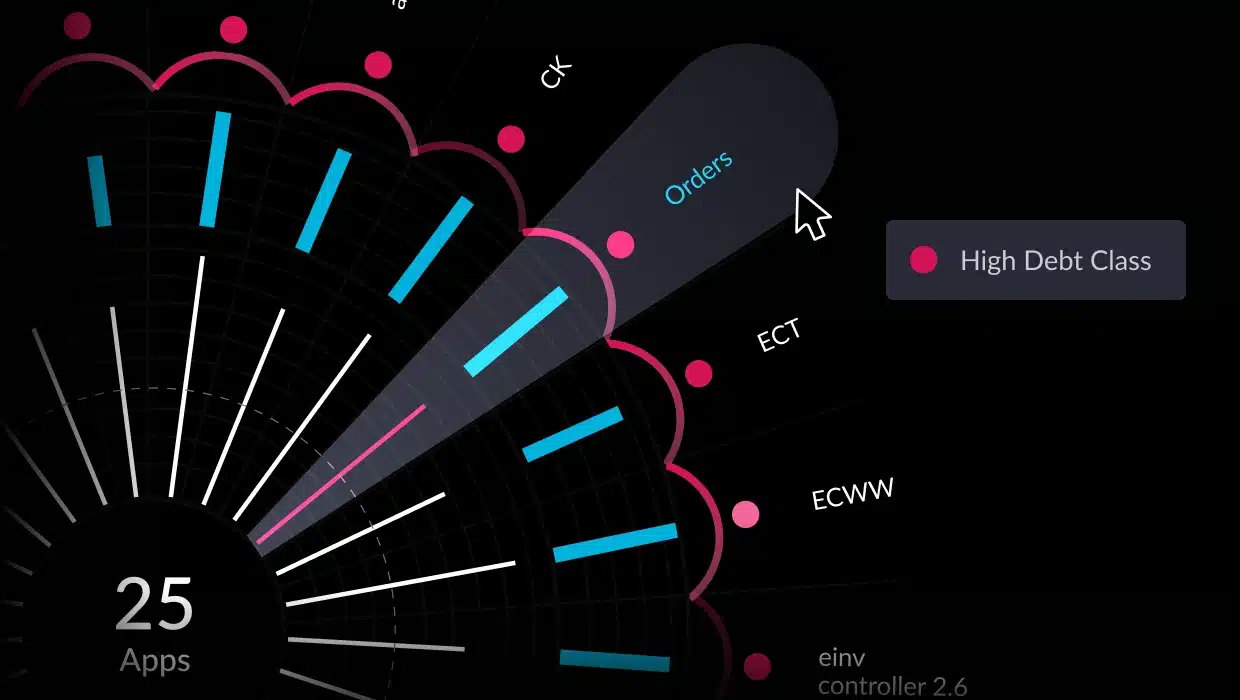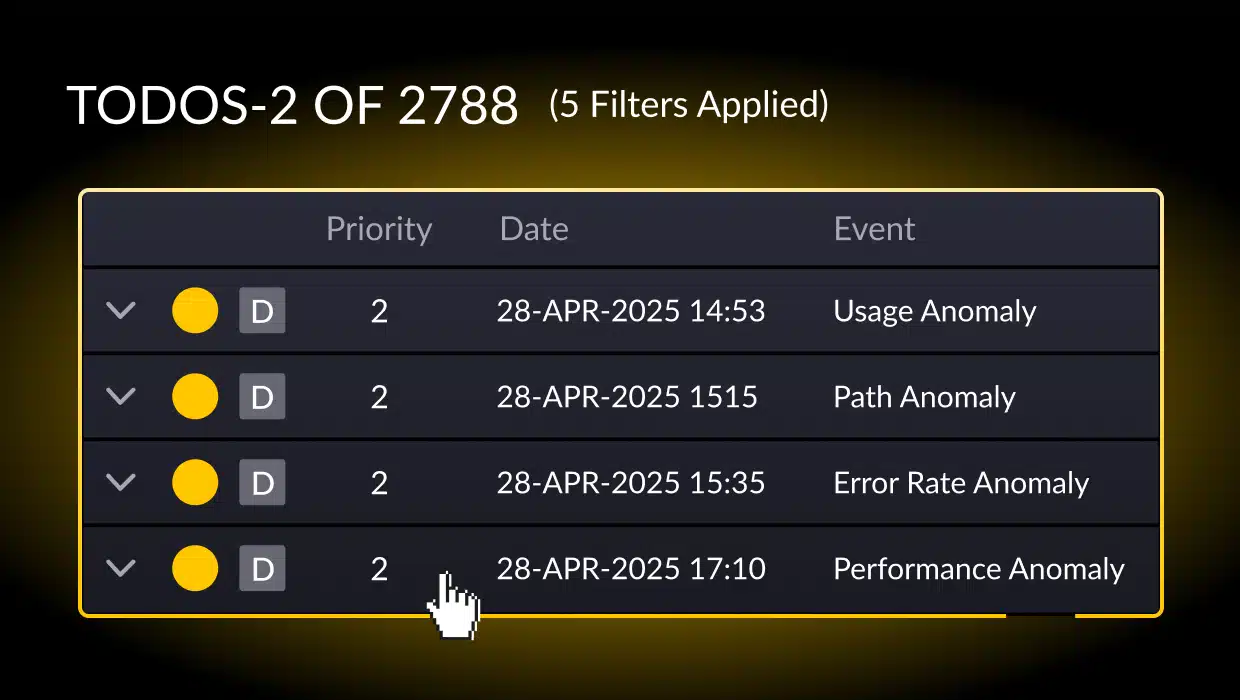Technical debt, a term often misunderstood and feared by developers and stakeholders, arises when development teams take shortcuts to meet rapid innovation demands and deadlines. These short-term fixes, while beneficial initially, accrue over time, slowing down future development and making it more costly and complex, akin to financial debt’s accumulating interest.
In this post, we will dive into the details of technical debt: what it is, where it comes from, how to identify it, and most importantly, how to reduce and manage it. Let’s start with a detailed examination of technical debt and its various forms.
What is technical debt?
Technical debt is the future cost of using the quick and dirty approach to software development instead of a more pragmatic, sustainable, and well-thought-out approach. Ward Cunningham first coined this concept, which highlights the trade-off between speedy delivery and code quality. When we take shortcuts to meet requirements, we incur a debt that will need to be “paid back” later. Paying back this debt usually entails more work in the long run, just like financial debt accrues interest. The repayment often manifests as refactoring, bug fixes, more maintenance, and slower innovation. That being said, experts on the subject tend to have varying opinions on what technical debt is and its causes/motivations.
Data from recent vFunction study: Microservices, Monoliths, and the Battle Against $1.52 Trillion in Technical Debt
Different views on technical debt
When interpreting technical debt, Martin Fowler, aka Uncle Bob, a pundit in the topic of software development, calls it “cruft.” His view focuses on internal quality deficiencies that make changing and extending a system harder. The extra effort to add new features is the interest on this debt. On the other hand, Steve McConnell, an internationally acclaimed expert in software development practices, categorizes technical debt into two types: intentional and unintentional.
Intentional Technical Debt is a conscious and strategic decision to optimize for the present, often documented and scheduled for refactoring. An example of this is using a simpler framework with known limitations to meet a tight deadline, with the understanding that it will be revisited later. Unintentional Technical Debt results from poor design, lack of knowledge, or not following the development standards, often without a plan to fix it.
Now, it’s extremely important to distinguish technical debt from just writing bad code. As Martin Fowler puts it, a “mess is not a technical debt.” Technical debt decisions usually stem from genuine project limitations and can be short-term assets, unlike a mess, which arises from laziness or a significant knowledge gap, increasing complexity without offering benefits or justifications for its causes.
Forms of technical debt
Although we often think of technical debt as being rooted in an application’s code, it can actually manifest in many different forms. It includes:
- Architecture debt: problems in the product’s fundamental structure
- Build debt: issues making the build process harder
- Design debt: flaws in the user interface or user experience
- Documentation debt: missing or outdated documentation
- Infrastructure debt: problems with the underlying systems
- People debt: lack of necessary skills in the team
Emerging as a new kind of technical backlog is AI debt, which, as Eric Johnson of PagerDuty highlights, involves complexities beyond code, spanning the whole data and model governance life cycle. Amir Rapson from vFunction points out that AI development can exacerbate technical debt through microservices sprawl, architectural drift, and hidden dependencies, severely affecting performance and scalability. Understanding and managing different forms of technical debt is crucial for prevention and maintaining system integrity.
Why technical debt accumulates
Technical debt exists in almost every application, accumulating due to many factors throughout the software development lifecycle (SDLC).
Deadline pressure
One of the most common underlying reasons is deadline pressure. Tight project schedules or urgent demands can force developers to take shortcuts and implement less-than-ideal solutions to meet the deadline. This often results in code that is not as clean, efficient, or thoroughly tested as it should be, letting certain edge-case scenarios slip through unhandled.
Lack of experience and knowledge
Lack of experience or insufficient developer knowledge can be a big contributor to technical debt. Inexperienced developers might write code that is not efficient, maintainable, or aligned with best practices. Similarly, a lack of understanding of design principles can lead to architectural flaws that are costly to fix later.
Changing scope and unclear requirements
Changing scope and unclear project requirements are other major sources of technical debt. If project requirements shift mid-development, even well-designed code might become obsolete or incompatible and need to be fixed with quick fixes and workarounds. Ambiguous or incomplete requirements can lead to suboptimal solutions and rework.
Temporary solutions
Often, development teams implement temporary solutions or quick fixes to address immediate issues, intending to revisit them later. However, these “temporary” fixes usually stay in the codebase and accrue interest in the form of increased complexity and potential bugs. A fellow developer accurately stated, “Later means never,” a sentiment that resonates deeply for its truth.
Code quality and standards
Neglecting code quality and standards leads to hard-to-read and maintain code, increasing errors and hindering future development.
Code reviews can be a great way to fight back against this, but we will cover that later!
Outdated technologies and inadequate testing
Using outdated technologies and deferring upgrades can create a lot of technical debt. Obsolete or deprecated technologies are harder to maintain and integrate with new solutions and often pose security vulnerabilities. Similarly, inadequate testing practices like incomplete test suites, truncated testing, or skipping testing for convenience can lead to undetected bugs and vulnerabilities that will cause future problems and, once again, require rework.
Intentional vs. unintentional
Finally, it’s essential to remember the difference between intentional and unintentional technical debt. While intentional debt is a conscious trade-off, unintentional debt is often due to oversight or lack of awareness. I would say that most of the time, technical debt is unintentional. However, intentional technical debt does have its place in specific situations. In these cases, it’s good to document it and get agreement from all parties that it’s okay for now, but needs to be improved later and not lost track of.
Although other causes can contribute to technical debt, the ones above cover the bulk of the causes for it. Since much of the accumulated technical debt is unintentional, knowing how to identify it is extremely critical.
Identifying technical debt
To fix an issue, you first need to identify it. In essence, uncovering technical debt is the first and most essential step toward managing and reducing it. While detecting technical debt can vary in difficulty, there are several clear indicators and methods teams can use to surface and track it effectively. Leveraging these tools and signals enables development teams to uncover weak points in their codebase and processes, so they can start addressing them or, at the very least, monitor them.
Signs and indicators
As development progresses, certain red flags can signal the presence of technical debt. If you’re beginning to feel like your project is slowing down or becoming harder to maintain, here are a few signs worth investigating:
- Slower development cycles and increased bugs: A growing web of complexity makes adding new features more time-consuming and error-prone.
- Inadequate documentation: Incomplete documentation often reflects rushed or ad-hoc development and will increase future maintenance costs.
- Use of outdated technologies: Relying on deprecated frameworks or libraries introduces compatibility, maintenance, and security challenges.
- Delays in time-to-market: Teams spend more time working around fragile or tangled code, which slows down delivery.
- Code smells: Long methods, duplicated code, or high complexity are all indicators of poor design that can accumulate debt.
- Excessive unplanned or defect-related work: High volumes of reactive work often point to underlying systemic issues in the codebase.
Methods and tools
Beyond qualitative signs, several methods and tools can help you actively identify and quantify technical debt:
- Code reviews: Peer reviews catch issues early and help enforce quality standards before problems become embedded in the system.
- Developer input: Your dev team often knows exactly where the pain points lie. Encourage open dialogue about areas needing cleanup or improvement.
- Stakeholder feedback: Reports of poor performance or delays in feature delivery can signal tech debt. Include BAT (Business Acceptance Testing) cycles to capture this feedback.
- Static analysis tools: Tools like SonarQube, CodeClimate, and ESLint highlight code smells, duplications, bugs, and security flaws.
- Defect and bug tracking: Monitor metrics such as bug frequency, time-to-fix, and defect density to uncover problem areas.
- Code churn analysis: Constant changes to the same areas of code suggest architectural instability or unclear ownership.
- Dependency audits: Identify and update outdated or vulnerable libraries that could be holding the system back.
- Technical debt backlog: Track technical debt using tools like Jira or GitHub Issues and integrate it into planning cycles like any other task.
By combining observational signs with hard data and feedback loops, teams gain a more complete picture of where technical debt lives—and how to start managing it effectively.
Strategies to reduce technical debt
Reducing technical debt is critical; prevention is key, but for existing debt, development teams must employ strategies to lessen its impact on the project.
Refactoring and testing
Refactoring, a common technique among developers, involves restructuring existing code without altering its external behavior. If you’re planning to refactor code or configuration, implementing automated testing is critical. Writing unit, integration, and end-to-end tests ensures the codebase works as expected and provides a safety net to developers when refactoring code.
Technology upgrades and documentation
Maintaining modernity in projects and enhancing documentation are key strategies for managing technical debt. Regular updates to libraries and frameworks reduce risks related to outdated dependencies, while staying informed about technology trends prevents security and compatibility issues. Leveraging the latest features also boosts performance.
Improved documentation is equally crucial. It provides clear insights into system functionalities and architectural decisions, helping both existing and new team members quickly understand and effectively work with the codebase. This clarity reduces errors, facilitates maintenance, and helps identify areas needing refactoring, thereby minimizing new technical debt. Together, keeping technologies up-to-date and ensuring holistic documentation not only enhances developer efficiency but also secures the project’s longevity and adaptability in a rapidly changing tech landscape.
Modularization and collaboration
The shift towards breaking monoliths into microservices highlights the benefits of modularization for scalable, maintainable systems. Modular architectures ease technical debt management by reducing tight coupling and simplifying complexity. This approach improves code organization, making strategies to mitigate technical debt more effective. Emphasizing code reviews and pair programming enhances code quality and preemptively addresses issues. Moreover, fostering collaborative practices encourages best practices, setting high standards within teams.
Backlog management and training
Systematically managing technical debt involves creating a backlog and ranking tasks by their impact and urgency. While business teams might view this differently, developers recognize the importance of treating technical debt on par with new features or bug fixes to tackle it proactively. Encouraging a “pay it forward” approach among developers, where they aim to improve the code with each change, effectively reduces technical debt over time. Additionally, investing in training and mentoring to address skill gaps and keeping the team updated on the latest technologies contributes to cleaner, more efficient code, preventing future debt.
Adopt AI into your workflows
Emerging technologies such as AI-powered testing and coding agents show promise in reducing technical debt, even as they continue to evolve. AI-powered testing tools can assist by automating many repetitive testing tasks and detecting issues early. AI coding agents can actually understand an entire code base and system (thanks to the ever-increasing size of context windows available on these platforms) and do a pretty solid job of refactoring with best practices in mind. Developers should exercise caution here as the technology is still in its infancy. This is especially true when letting AI agents run rampant throughout a codebase without human checks in place to ensure quality is still high. Outside of agentic coding, platforms like vFunction are also powered by AI and specifically built to help users identify areas where technical debt occurs, especially at the architecture level. We will cover more on the specifics of how it can help a bit later in the blog.
Implementing these practices provides a solid foundation for systematically managing technical debt. While project size and debt levels affect how quickly improvements may be seen, a major challenge for tech teams remains balancing the demand for new features with the need to reduce technical debt for smoother, more stable future development.
Balancing technical debt & feature development
Effectively managing technical debt involves striking the right balance between mitigating existing debt and rolling out new features essential for an application. It’s a challenging dilemma that many developers find themselves wrestling with. As technical debt mounts, the efficiency in delivering new features takes a hit. So, what’s the solution? Here are several strategies to elevate technical debt reduction to the same level of importance as feature development.
Prioritization and communication
Managing technical debt effectively involves:
- Integrating maintainability: Treat codebase health as essential for faster, efficient development.
- Prioritizing high-impact debt: Focus on the most obstructive or destabilizing debt.
- Employing metrics: Use data and tools to identify and measure technical debt.
- Communicating with data: Present technical debt impacts to stakeholders in a data-driven manner for support.
- Ensuring understanding: Align the team on the consequences of neglecting technical debt for feature delivery and bug resolution.
Integration and planning
For effective management of technical debt, consider these strategies:
- Unified backlog: Merge new features and technical debt tasks into a single backlog for holistic prioritization. Make debt reduction a consistent part of the workflow, not an occasional task.
- Regular discussion: Include technical debt as a recurring topic in stakeholder meetings and sprint planning.
- Dedicated allocation: Reserve a fixed portion of each development cycle (10-20% or more, based on severity) for addressing technical debt.
- Prioritization frameworks: Understand the impact of new features versus the long-term health of the product to aid decision-making. Utilize methods like MoSCoW to prioritize between technical debt and feature requests efficiently.
- Stabilization sprints: Incorporate sprints focused solely on technical debt and bug fixes to ensure system stability.
Long-term best practices to prevent technical debt
Preventing technical debt is far more efficient than resolving it down the line. Proactively embed sustainable practices in your workflow that highlight quality, maintainability, and teamwork right from the beginning.
Code quality and reviews
A strong foundation of clean, modular, and well-structured code is essential. Following coding standards and enforcing regular code reviews means best practices are followed and domain knowledge is distributed across the team. Refactoring as part of your regular sprint cycle prevents small inefficiencies from snowballing into big problems.
Testing, documentation, and dependencies
Automated testing (unit, integration, end-to-end) gives you the confidence to refactor and deploy with reduced risk. Updating dependencies regularly helps to avoid security vulnerabilities, bugs, and compatibility issues down the line. Simplify code wherever possible; complex solutions may feel clever at the time, but tend to generate more debt. Clear documentation (architectural decisions, APIs, diagrams) helps to prevent knowledge loss and accelerates onboarding and debugging.
Tools, plan ahead, and culture
Integrate static analysis tools into your CI/CD pipeline to flag issues early and enforce consistency. Plan ahead and design for scalability from the start to avoid piling on technical debt and costly rework later. Just as important, create a culture where technical debt is openly discussed and developers feel responsible for the long-term health of the codebase. Document design decisions and agree on standards upfront to avoid chaos later.
CI/CD and cross-team collaboration
Continuous integration and delivery practices help to catch regressions quickly and keep quality high. Promote cross-team communication to break down silos and make sure everyone (developers, operations, QA and everyone in between) is aligned on goals and pain points. Invest in ongoing training and make time for learning to keep your team up to date with the latest patterns, tools, and techniques used within the application and codebase. Infrastructure-as-code, monitoring, and observability should also be used to help to uncover hidden areas of debt, especially in fast-scaling environments.
Integrating these practices into your workflow establishes a feedback loop that prevents technical debt from creeping in, enhancing the resilience, efficiency, and innovation of your engineering team. The right tools play a crucial role in this strategy. This is where bringing in vFunction can benefit your team in multiple ways.
How vFunction can help reduce technical debt
Managing and addressing technical debt can be daunting, but it’s essential for maintaining the long-term health and sustainability of your software systems. That’s where vFunction comes in.
vFunction helps customers measure, prioritize, and remediate existing technical debt, especially the sources of architectural technical debt, such as dependencies, dead code, and aging frameworks.
vFunction’s platform is designed to help you tackle technical debt challenges in complex, monolithic applications and in modern, distributed applications. Our AI-powered solution analyzes your codebase and identifies areas of technical debt. This allows teams to communicate technical debt issues effectively and provide actionable insights to guide modernization efforts.
Here are some key ways vFunction can help you:
- Assess technical debt: vFunction comprehensively assesses your technical debt, highlighting areas of high risk and complexity.
- Prioritize refactoring efforts: vFunction helps you identify the most critical areas to refactor first, ensuring that your modernization efforts have the greatest impact.
- Automate refactoring: vFunction automates many of the tedious and error-prone tasks involved in refactoring, saving you time and resources.
- Reduce risk: vFunction’s approach minimizes the risk of introducing new bugs or regressions while modernizing legacy systems.
- Accelerate modernization: vFunction enables you to modernize your legacy applications faster and more efficiently, unlocking the benefits of cloud-native architectures.
With vFunction, you can proactively manage technical debt, improve software quality, and accelerate innovation.
Conclusion
Technical debt is unavoidable in modern software development, but it doesn’t have to be a barrier to progress. With the right strategies in place, teams can manage technical debt and use it as a stepping stone toward cleaner, more scalable systems. From identifying root causes and implementing reduction techniques to adopting long-term preventative practices, the key lies in maintaining a balance between building for today and preparing for tomorrow.If your team is struggling with growing complexity or slowing velocity due to technical debt, especially at the architectural level, connect with the experts at vFunction. Our AI-powered platform can help you assess your current state, prioritize what matters most, and modernize confidently.







